


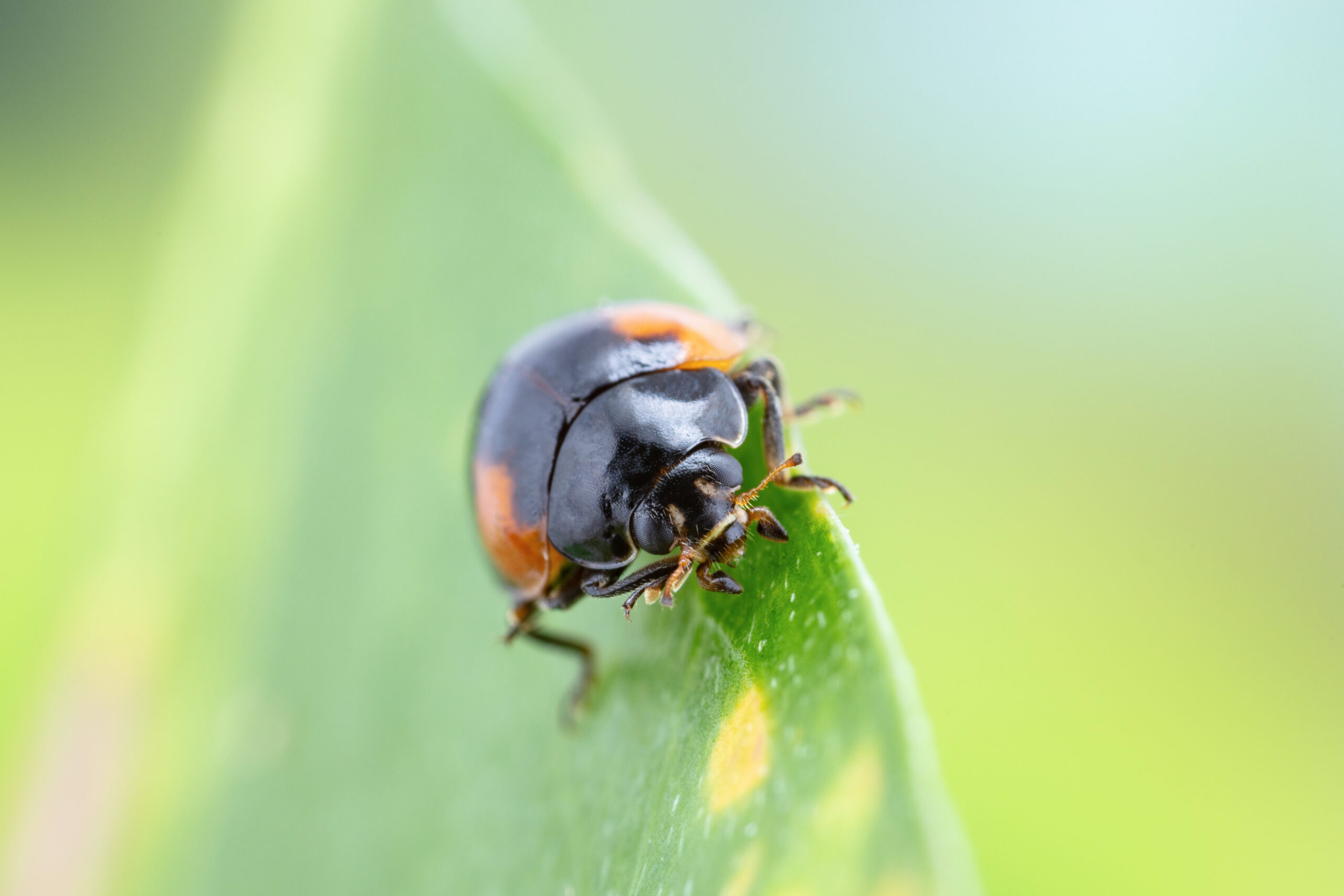
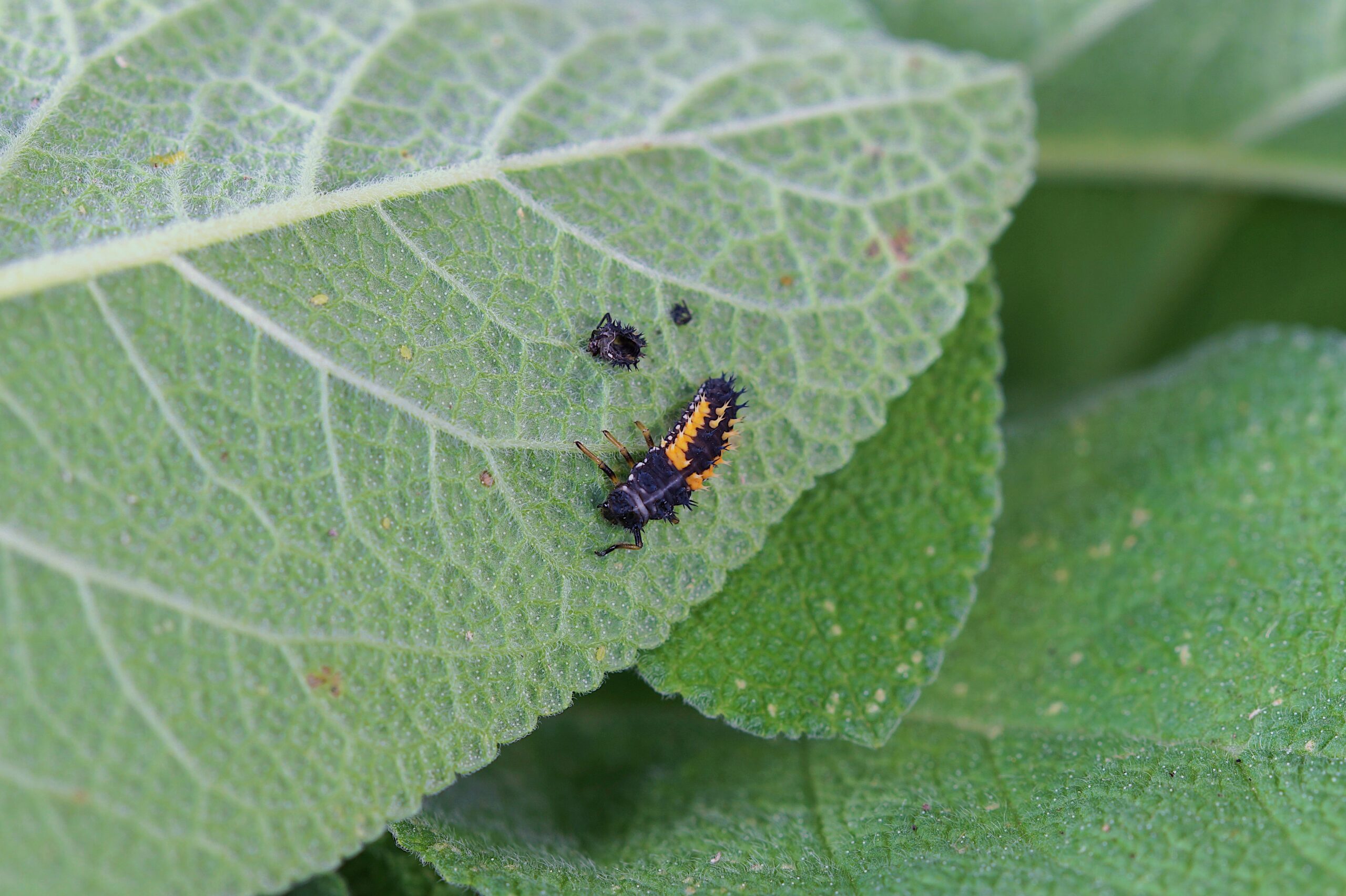

Adalia bipunctata
This product is unavailable in you country
For more information about this product, please contact us.
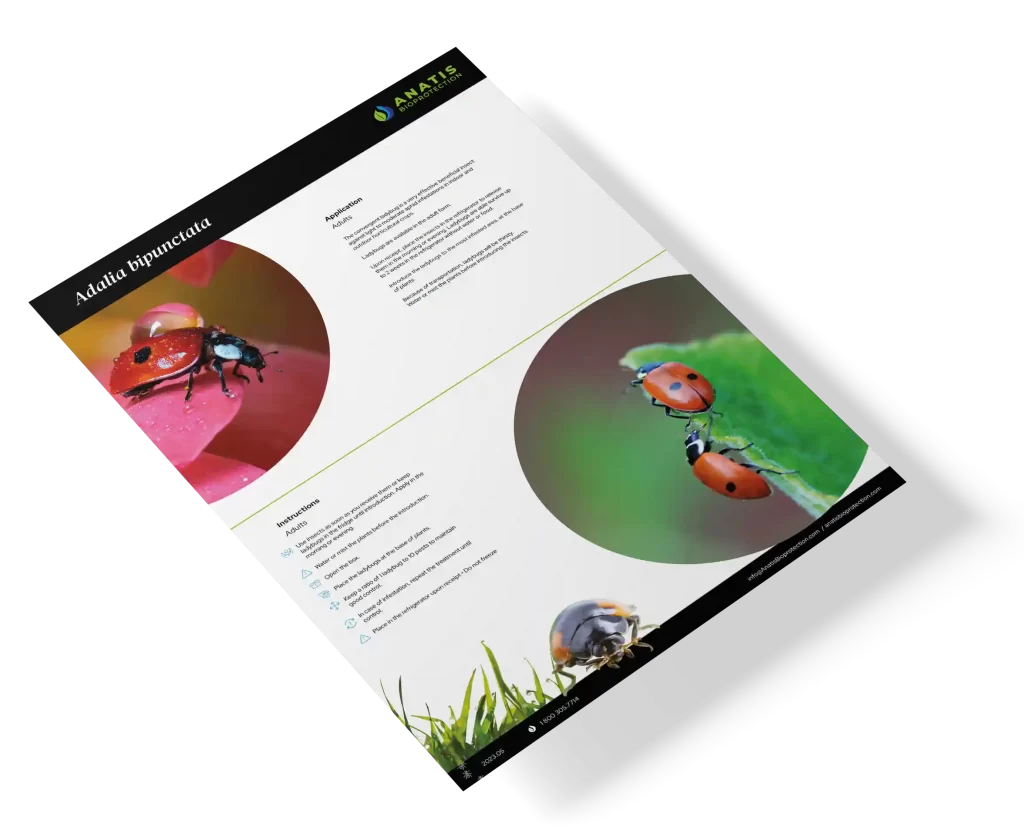

Technical sheet
DOWNLOAD IT NOW!Get easy access to all the information on this product by consulting its technical data sheet.

Targeted crops
- Greenhouse :
- Tomatoes
- Cucumbers
- Peppers
- Sweet peppers
- Lettuce
- Outdoor :
- Celery
- Cruciferous
- Broccolis
- Kale
- Brussel Sprouts
- Cauliflowers
- Turnips
- Radish
- Potatoes
- Orchards
- Ornamental crops
- Berries :
- Strawberries
- Raspberries
- Blueberries
- Grapevines
- Garden centers
- Gardens :
- Flowers
- Rosebushes
- Trees and shrubs

Targeted pests
- Melon aphid (Aphis gossypii)
- Foxglove aphid (Aulacorthum solani)
- Green peach aphid (Myzus persicae)
- Potato aphid (Macrosiphum euphorbiae)
- Bird cherry-oat aphid (Rhopalosiphum padi)
- Other aphid species
- Other soft bodied pest insect and insect eggs

Application Instructions
To ensure a successful aphid management strategy, consider releasing ladybugs early in the season to prevent an infestation. The number of insects released depends on environmental factors as well as size and type of area being treated; however, one or two bugs per square meter should suffice for preventive maintenance while twenty-plus is recommended when dealing with existing populations.

Storage Instructions
Proper storage of your products is essential for optimal quality. Maximize their longevity by storing them maximum 1-2 days after receipt in a cool, dark space at 8-10°C.
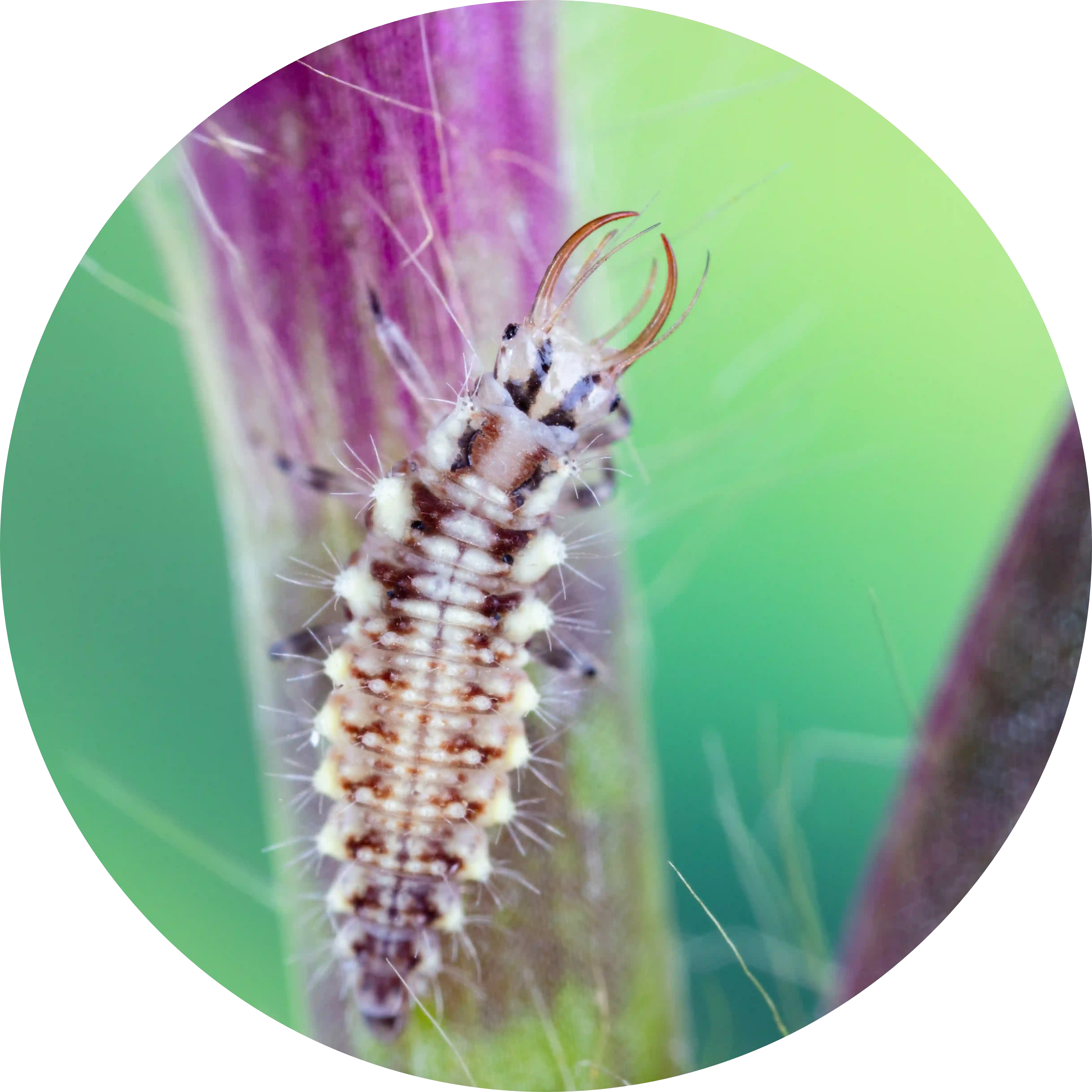




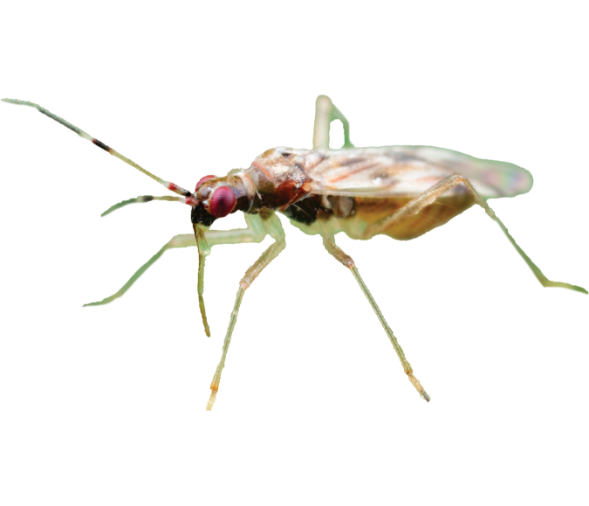


Description
Adalia bipunctata, commonly known as Ladybug, is a garden superhero! Brightly colored with their signature orange and black pattern adorned by 12 spots – these lovable little insects can measure up to a mere 6mm in length! Native species of North America, they provide highly valued assistance while never causing any nuisance themselves.
Adalia bipunctata is a beneficial insect that is widely used as a biological control agent in agricultural and garden settings. The Ladybug feeds on aphids and other soft-bodied insects, helping to reduce populations of these pests.
The female lays clusters of yellow eggs on the undersides of leaves, and the larvae that hatch from these eggs feed on aphids and other small insects from June to September.